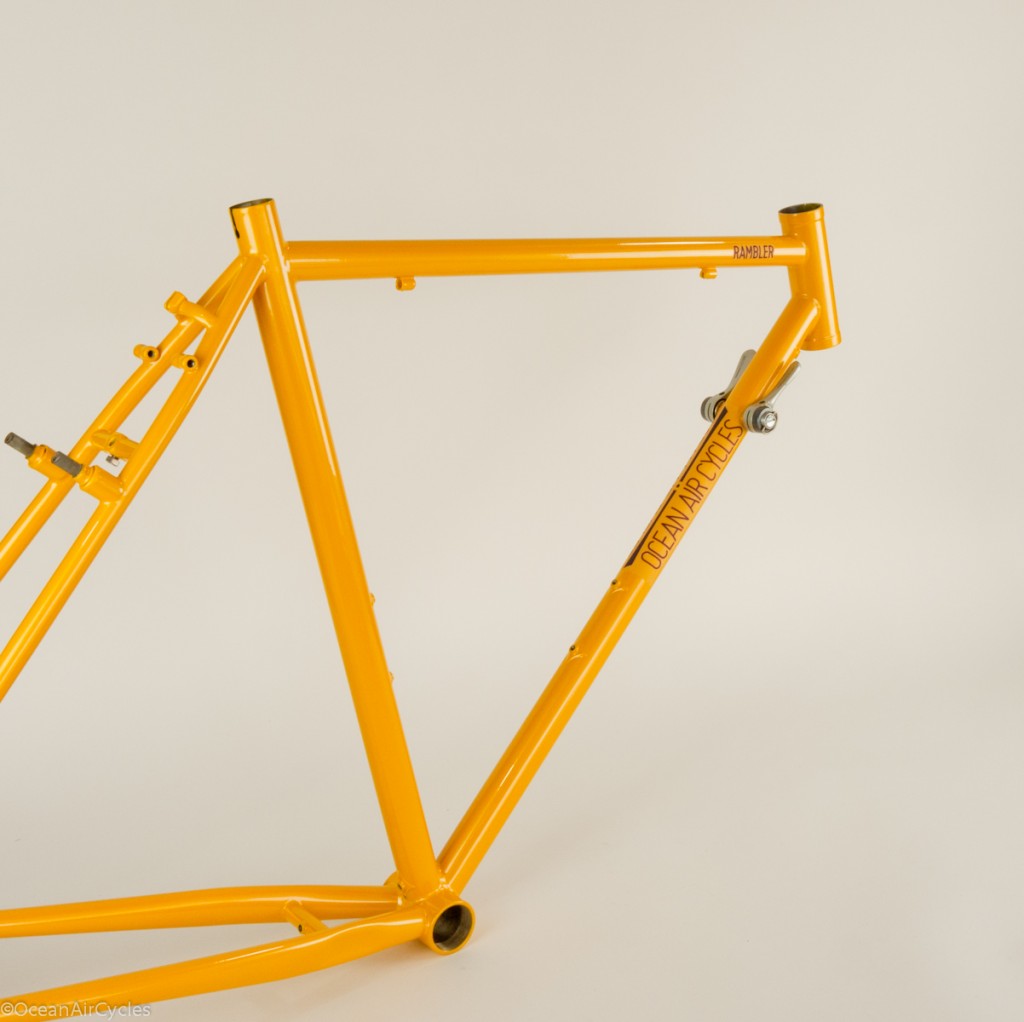One of the fundamental requirements of pushing the limits of the Rambler in the real world is load testing. As the test pilot, this can get interesting. I have both a vested interest in the success of the design as well as keeping my teeth. As much as possible I try to keep the loaded riding practical, i.e. running errands that need to be done anyway. Today I found some of the limits of load distribution while also pushing the boundaries of a prototype saddle bag support.

Through a series of stops the load progressively pushed higher. I am hitting the scales at about 220lbs right now, the racks add another 3 lbs or so, the empty bags are close to 4lbs and then there is the camera gear at 3-5 lbs. Today’s final grocery stop added 40+ lbs of stuff.

With load testing the bag support in mind I put all the juice, milk, liquids and potatoes in the rear bag, just over 30lbs. There are a couple of observations. The saddle bag support held the load fantastically without transmitting any twist to the saddle the way a Bagman has in the past. This load did push the upper limit, where the handling of the bike was diminished. I could feel excessive flex in the rear of the bike, and while nothing broke, after a mile or so I stopped to redistribute the load. The sensation was more of a tail wagging the dog, with twisting of the frame from the rear as the load swayed. I moved roughly half of the rear load to the panniers and everything went back to normal for the 10 miles remaining. I could even ride well enough with no hands.
This confirmed my design optimization of keeping the front end stiff enough for stability with moderate loads and the rear end compliant for both pedaling and road quality comfort. With or without load, I am ecstatic with the handling of the bike, and managed to hit 98% of my design goals on the first pass. While not wanting to put a weight limit on the bikes, rides like this help me to clarify the outer boundaries, and are fun too. There is something primal yet fun about pushing the limits of our creations and having it work.




